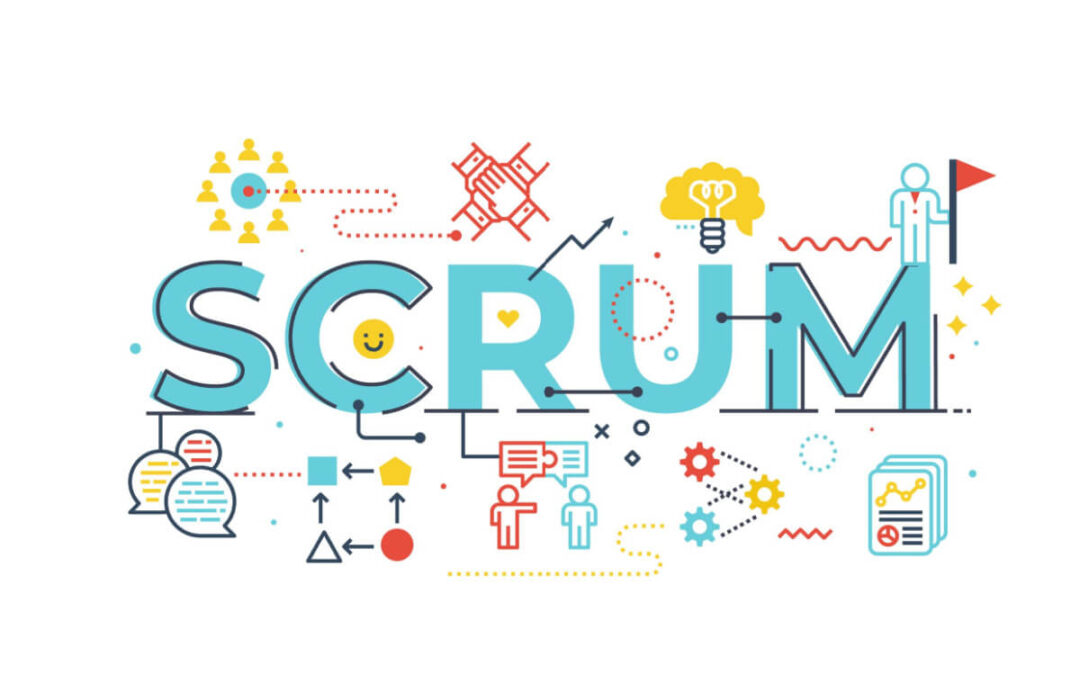
by admin | Sep 12, 2019 | Agile Testing, Fixed, Blog |
Software development has become increasingly complex in recent times because of which the popularity of Agile is on the rise. A larger number of software development teams are now using Agile as compared to the earlier popular, Waterfall. The onus of QA in such a scenario falls on the agile testing team, especially in the wake of the myriad challenges linked to the continuous demand on companies to deliver quality software.
Since agile development is gaining momentum, a software testing company focuses on building a team of testers who understand the processes and methodologies of agile development. Despite best efforts, this realm is not free of its share of ‘tests’ and we examine some of the key challenges faced by agile testers:

Adjusting to Last Minute Changes in Requirements
One of the biggest challenges faced by agile testers is adjusting to and remaining flexible to incorporate frequent changes in requirements. Since the addition, deletion, or updating of requirements is common in agile projects testers may sometimes have to scrap the work already completed or make changes to the work in progress. The inability of agile testers to adjust to changing requirements can affect the scope of testing, which in turn lead to the frustrating situation of delays in delivery or substandard products.
Accepting Testing as a Continuous Activity
Even the most experienced agile testers find it hard to accept that agile testing services are a continuous activity. In agile, testing cannot be considered merely a phase in software development, but rather the job of testers starts from the beginning of the software development process and continues through the SDLC. Hence, testers must work together with product owners to gain knowledge of the details of the ‘story’ and write acceptance criteria. In addition, they must be able to create accurate tests based on requirements and provide quick and relevant feedback to developers.
Coping with Insufficient Test Coverage
An agile testing team faces the pressure of inadvertently missing out on critical tests for a requirement given the frequent changes and continuous integration. Insufficient test coverage can also be a challenge for testers, especially when unanticipated changes occur within the code. Additionally, testers may sometimes skip the testing of certain functionalities and features to meet the continuous delivery demands of agile development. This, in turn, could result in some serious flaws in the software.

Learning to Validate Software Functioning without Documentation
Another challenge faced by agile testers is the non-availability of documentation. Since agile testing is carried out with practically zero documentation, the verification and validation of the software functioning without documentation can be a daunting task for testers.
Keeping Pace with Delivery while API Testing
Agile testers generally face the challenge of testing APIs because they lack the requisite skills, especially if they have mostly been performing manual or exploratory testing. A software testing company cannot miss API tests because software design now largely revolves around a service-oriented architecture that publicly exposes the APIs. Lack of skills for testing APIs may hamper the ability of a testing team to perform continuous testing and keep pace with delivery. Working with an expert and renowned software testing company would eliminate this risk.
Handling Communication Issues
In an agile software development project, communication plays a crucial role. However, the fast-paced environment may sometimes pose a challenge for the testing team because of the lack of proper communication among the members of the team or with the developers and product owners. Such a situation can be distressing from the QA standpoint because of the possibility of bugs in software. Outsource your QA testing activities to ensure focused attention to proper communication, both verbal and written.
Managing Performance Problems
The addition of more lines of code by developers can lead to performance problems, particularly when developers fail to ascertain the impact of the changes on end-user performance. Such problems in performance can be challenging for agile testers because they need to keep track of performance over time. It is their responsibility to identify the areas in the code, which could be causing performance issues and take speedy action to resolve the issues.
Fixing Broken Builds
Frequent changes in code by developers can increase the possibility of a broken build, and thus affect the functionality. With Software testing services markedly focused on fixing issues in software, agile testers face the challenge of ensuring that changes in code do not break the existing features. Hence, they would need to run a series of tests against each build.
Staying Focused
An agile team may lose focus at times because the testers must carry out multiple activities on a regular basis. It is the job of agile testers to set up a test environment, conduct continuous testing, fix broken builds, provide feedback to developers, and review test cases for unit, integration, and regression testing. Finally, they must also remain available during production release.
In Conclusion:
It is evident that an agile testing team faces unique challenges while performing software tests. However, if they understand the challenges and can adapt to changing requirements in an agile project, they would successfully deliver on the overall goal of the project. This can help the agile testing team to effectively manage the expectations of the clients and ensure the delivery of high-quality software. Connect with us to work with some of the best agile testers in the market today.

by admin | Sep 26, 2019 | Agile Testing, Fixed, Blog |
Every member in a cross-functional agile team is responsible for quality output. This would be the primary assumption when describing agile work practices in modern software development frameworks and practices. The software testing professional represents a central and critical member of Scrum teams. Industry experts say that the role of an effective tester extends to coaching and helping team personnel to build requirements, test software functionality, and deliver a complete software product.
High-Quality Test Cases
Members of an agile testing team can drive higher productivity through collaboration and discussions. Such collaboration can extend to writing meaningful test cases as part of the design, writing, and, execution efforts. Testers must use their experience to write a wide range of test cases that ensure the thorough testing of the software under development, which in turn, could lead to the success of a software product.

Better User Stories
Typically, a user story represents a tool in agile software development practices. These stories capture a description of a software feature from the perspective of an end-user – describes the type of end-user, what they want, and why. Essentially, a user story helps create a simplified description of the customer requirements. Hence, user stories are quintessential to ensure the functionality of a software product. Team members of a scrum workgroup must invest collective thought in the development of better user stories. In this context, a software testing company can encourage testers to raise different queries, explore alternative paths to software development, and analyze a range of conditions. The inclusion of professional software testing engineers would also drive a deeper understanding of client expectations, resulting in a superbly functional software package.
Informed Estimations
The inclusion of testing professionals ensures that Scrum teams make informed estimations in their software development programs. This aids developers in the discharge of their professional duties, thereby economizing on the use and deployment of corporate resources such as manpower. This makes teams self-sufficient and helps to promote operational excellence. Test estimations comprise critical questions that examine the duration of a testing session and the attendant costs. In line with this, software testing professionals must assess the resources required to plan and execute various tasks in a project. Further, team members of a testing group must apply their human skills to spur the completion of testing goals and objectives.
Teamwork and Communication
Developers may believe that testing activities act as a bottleneck in agile team environments. This belief can be negated if such teams include testers from the start of a development project. The ensuing flow of communication helps developers and testers execute test cases on time, thereby preventing bottlenecks that could potentially slow down a project. Further, two-way communication and hand-holding efforts allow software testing professionals to coach developers in resting routines, thereby expanding the pool of testers as a project nears completion. Additionally, testers can attend sprint-planning sessions at the onset of a software development project. Daily meetings and execution of short demonstrations to spotlight the contribution of software testing services, would add to the efficacy. As a rule, testing professionals must execute testing throughout the sprint sessions.
Create and Execute
Testers must engage all team personnel in the creation, execution, and maintenance of all types of tests: automated and manual. This would ensure greater familiarity for those involved with agile testing frameworks and mechanisms. Short feedback loops must be instituted, along with testing deployment in environments that mirror the use of the software by the client. Such actions reinforce the assertion that testers must participate in Scrum teams from the start. Certain Scrum projects position dedicated test teams depending on the nature and complexity of the development project. In such scenarios, testing professionals can deploy automation testing tools and frameworks to comply with short delivery timelines.
In Conclusion
These would be the top reasons to create a compelling case for including testers in Scrum teams from the start. Companies must appreciate this fact should they wish to design and deploy outstanding software packages for their clients. Connect with us as the experts in this realm and much more.

by admin | Jul 19, 2019 | Agile Testing, Blog |

by admin | Aug 16, 2018 | Agile Testing, Fixed, Blog |
In this blog article, we have listed Agile Testing tools which are popular among experts. We, as a QA Company, use several software testing tools which help to achieve QA objectives and enable effective collaboration.
JIRA
Developed by Atlassian, JIRA is both an Agile Testing and Project Management Tool. Generally developing products for project managers, software developers and the like, Atlassian Corporation Plc is a software company that has its headquarters in Sydney, Australia and was founded in 2002.
- It has the provision for being integrated with other developer tools so as to allow for an end to end traceability.
- It is able to informed decisions along with planning and forecasting roadmaps.
- Agile Methodologies such as Scrum, Kanban, etc are supported by JIRA
- JIRA has the provision to view a variety of reports with real-time team performance with its exceptional reporting feature.
- JIRA Query Language can be used to create customized filters.
Cucumber
The Cucumber testing tool was developed on the basis of the Behavior Driven Development or BDD framework.
- Initially implemented in Ruby and later on extended to the Java framework, they are both capable of supporting Junit.
- Cucumber can be utilized to write acceptance tests for web applications.
- There is a provision for automating functional validation using just plan and readable English sentences.
- Cucumber also supports a host of other languages such as PHP, Perl, .Net, Python, etc.
- It can be integrated with Capybara, Watir, Selenium and more.
Zephyr
Developed specifically for use in present technological circumstances, Zephyr is a real-time Test Management Tool that was designed specifically to adapt to the dynamic changes occurring in testing processes. Used for newly developed and complex business applications, it helps deliver high-quality products by efficiently managing all processes and tasks associated with the software testing life cycle.
Zephyr is compatible with methodologies such as V-Model, Waterfall, and others, apart from the agile methodology itself. Its ability to integrate with JIRA allows for the effortless management of testing activities. Tracking of project status and ensuring the delivery of high-quality products is made possible by the Zephyr add-in into JIRA.
- Zephyr for JIRA has the provision for importing user stories as well as maintaining traceability.
- Zephyr is integrated within JIRA as the look and feel of Zephyr bear close resemblance to that of JIRA.
- Zephyr has the capability to integrate itself with Selenium, QTP, JIRA, Bamboo, etc.
- Allows not only for the planning of test execution cycles but also the creation and modification of the test themselves.
- The structure folder management architecture allows for the tests to be organized in such a way that they can be reused easily at any point.
- It has the capability of assigning resources necessary for execution, building test cycles and also aligning sprint.
- Zephyr facilitates the effortless tracking of quality metrics and the efficient execution of tests and storage of results.
- A single view of all information on the project, sprint and release is provided by the Zephyr Enterprise.
PractiTest
Utilized as a test management tool for agile testing, PractiTest is simple to understand and learn as well as affordable and flexible, in terms of aiding both developers and testers. Along with being able to provide a detailed status of your project, PractiTest has the provision for requirements, results, issues, test runs, and reporting. Having control over each and every task, it is able to manage both the development and testing processes.
On a need-to-know basis, PractiTest is able to relay information to a range of stakeholders beginning from developers and testers to senior management and others. PractiTest is also able to display information in a number of different ways.
- It has the capability of being integrated with other tools such as Jenkins, Selenium, TestComplete, JIRA and more.
- In order to be able to manage and find information, it is based on a hierarchical tree structure.
- Users of the tool have access to relevant as well as extremely accurate information through the powerful, customizable dashboard.
- It facilitates the seamless importing of existing data.
- It is able to generate complex database queries.
- On the basis of sprints, it is able to create and organize manual tests.
- It is proficient enough to create bugs precisely from the test run.
TestRail
Owned by Gurock Software Company, TestRail was created to serve as a modern Agile Testing Tool. Having its headquarters in Berlin, Germany, Gurock Software which was founded in 2004, functions as a software development and QA firm. Gurock creates products that help build software, for their customers all over the globe.
At present, their products are used by some of the topmost technological organizations of our time including DELL, Intel, Oracle, Adobe, HP, Microsoft, and others. It is a web-based tool that is conventionally used by testing teams to supervise Agile Testing Efforts. Constructed particularly for being able to support agile project milestones, TestRail provides sprints, metrics and various reports to help do so.
- It is capable of governing all Testing efforts including test cases, test runs, track test results, etc.
- It is able to integrate seamlessly with other automation tools such as Selenium, Jenkins, and JIRA.
- Its cloud edition allows for it to be used without the need for any installation or setup procedures.
- On the basis of the filter, it has the capability to easily select test cases for execution as well as store the results, using a modern interface.
- It keeps the user informed all through the testing cycle, with its various dashboard features, email notifications, and reports.
- Apart from being able to integrate with automation tools, it can also be integrated with Github, Rally, TFS, FogBugz, Bugzilla and more.
SoapUI
Developed by SmartBear, SoapUI is an agile testing tool with an incredibly advanced REST and Service Oriented Architecture (SOA). Launched in 2009, SmartBear is a Software Information Technology Company having its headquarters in Boston, USA.
Used primarily for the functional testing of web services, SoapUI serves as a tool for web service development, the invoking of web services, etc. Test cases for web services can be effortlessly created using SoapUI. Equipped with a robust GUI, it is capable of executing testing and analyzing reports within the GUI itself.
- It is an open source tool that is free to use.
- It is able to support both SOAP web service functional testing as well as REST API functional testing.
- It facilitates the creation and execution of functional, regression and load tests.
- The drag and drop interface allows for the effortless creation of test cases.
- Apart from being able to support all standard protocols it also provides complete and comprehensive test coverage.
- SOAPUI supports data driven testing as well as multiple environments.
VersionOne
Launched in 2002, VersionOne, a tool used by fortune 100 companies for developing agile software solutions and services, was acquired by Collabnet Inc in 2017. Having its headquarters in Alpharetta, Georgia, it also has other offices located in Amsterdam and Atlanta.
It serves as an agile testing and project management tool for the supporting of agile methodologies like Kanban XP, Lean, Scrum, and the like. The tool’s drag and drop interface provides a centralized view of the backlog.
- It improves project visibility as it provides centralized project management.
- It facilitates the handling of stories and epics across multiple project teams and projects.
- Apart from the capability to provide a project with adequate visibility through the course of the entire lifecycle of the project, it is also able to effortlessly define and track delivery across all projects.
- The drag and drop interface helps users to prioritize stories as well as defects.
- It can be integrated with GitHub, TFS, Jenkins, JIRA, etc.
Selenium WebDriver
Extensively used across the software industry, Selenium WebDriver is an agile automation tool that is incredibly advantageous in the present context, in that it has the capability to run any project in the agile methodology as well as repeatedly run tests using automation.
Selenium WebDriver is used for web-based applications and most often in a range of agile projects, because of its provision for being able to incorporate the individual contributions of every team member, to the automation of the test cases.
- It does not support desktop based applications and can only be used to automate browser-based applications.
- It facilitates the seamless construction of keyword-driven frameworks.
- Possessing the feature of Automating test cases allows it to simulate how an actual user will be able to interact with the application.
- Automation scripts can be written in a range of programming languages such as C#, JAVA, Ruby, Python, and PHP.
JMeter
Written using the JAVA programming language, Apache JMeter serves as an agile performance testing tool, to measure not just the performance of an application but also the functional behavior of that application under a definite load. It allows users to analyze the performance of an application by simulating a heavy load on the web server.
- It is an open source tool.
- It has the provision for performance measurement of applications under varying simulated loads, using graphical analysis.
- JMeter has the capability of testing the Load and Performances of a range of different servers, applications, etc.
- Data Analysis and visualization is supported by the extended plug-in feature.
- It facilitates the performance measuring of static as well as dynamic resources such as Servlets, FTP servers, and Java Objects.
QMetry
Developed for DevOps, QMetry is an Open Source agile testing tool that aids the agile team in building, managing and deploying software faster than any other tool. Features such as customized metrics, Continuous Integration, powerful test management and test automation mean that QMetry provides highly impressive agile solutions.
It’s plug-in for JIRA provides access JIRA users access to incredibly advanced test metrics and reports. It facilitates automation for Continuous Development as well as Continuous Integration. It also allows for the efficient conversion of the automated test results into detailed summary reports and high quality metrics.
- It can be easily integrated with Rally, Bamboo, ALM, Selenium, VersionOne, etc.
- The creation and organization of a large volume of user stories and test cases is made possible by its support of the agile testing methodology.
- Its support for agile testing also enables complete coverage of test cycles, defect management, traceability as well as planning and execution of tests.
- QMetry for JIRA was designed and constructed specifically for conducting test management activities for agile projects.
- User stories can be linked to the scenarios using the drag and drop feature.
- The progress on testing activities can be monitored using the customized dashboard as well as detailed analysis reports.

by admin | Mar 23, 2017 | Agile Testing, Blog |
One day my six months baby woke up and started crying in the cradle. I heard the cry and started swinging the cradle.
After swinging 5-10 minutes, he did not stop crying. Then I started talking and smiling at him. He suddenly stopped crying. A cry is a signal from a baby. I reacted with a positive attitude.
Even for a baby, attitude matters a lot.
“Testers advocate for quality on behalf of the customer and assist the development team in delivering the maximum business value. Skills are important, but attitude counts more.”- Lisa Crispin
When I first started working in an agile team as a remote team member from India. I made the following mistakes.
Not providing feedback for continual improvement in the retrospective meeting.
I did not collaborate effectively with the developers and the stakeholders.
I thought only about automation tests since I was passionate about it and was poor in detecting issues while performing exploratory testing.
I was not interested in discussing manual testing.
Afraid to speak boldly in meetings.
Everyone in the team was enjoying their work and collaborating well except me. However, I maintained the automated scripts very well.
You may ask why the team retained me because my profile is well known for automation testing.
One fine day I was caught by an agile coach. He found the problem and advised me.
The advice is “You have got good skills. Creating robust automated regression tests is just a skill. Change your mindset. You are here to produce high-quality e-Learning product and drive development with effective collaboration.”
That conversation with the agile coach helped me a lot. The entire team started helping me.
I changed my mindset to work as an agile tester.

“A professional tester who embraces change, collaborates well with both technical and business people and understands the concept of using tests to document requirements and drive development.”- Lisa Crispin
Approach agile testing with the right mindset. Enjoy working in the agile environment.
Written by-Asiq Ahamed

by admin | Mar 9, 2017 | Agile Testing, Blog |
As an agile testing services company, sharing Agile testing practice is the key to success. Before starting this article, we would like to thank Jan Molak who introduced SerenityJS to us.
Let’s start with the definition:
Serenity/JS is a next generation acceptance testing JavaScript library.
Features of SerenityJS:
Screenplay pattern which helps you shift the focus of automated acceptance tests from low-level interactions with the system to thinking about who the users of your system are, what is that they want to achieve by their interaction with your system and how exactly they’re going to do it.
Comprehensive reporting capabilities
SOLID design principles.
It supports CucumberJS, Mocha Protractor, and Chai.
We were surprised when we read about ScreenPlay pattern. Maybe we are late. However, this is the concept answered our question.
The question is:
How can a business person understand and verify the logic which is implemented inside a step definition?
How the ScreenPlay pattern addresses the problem? The Screenplay Pattern is a user-centred model which allows you to write automated tests with the defined user roles and persona.
It is impossible for you to understand ScreenPlay pattern without knowing what user roles and Persona is.
User roles:
A user role is a collection of defining attributes that characterize a population of users and their intended interactions with the system. Consider we are building an e-learning application. Before writing user stories, we need to brainstorm to identify, consolidate and condense user roles.
Defined user roles for an e-learning application:
Instructor
Student
Admin
Persona:
A persona is an imaginary representation of a user role. Creating a persona requires more than just adding a name to a user role. A persona should be described sufficiently that everyone on the team feels like they know the persona.
Persona Example:

Anna works as an instructor, and she creates students, assigns assignments to her students, and views reports of students. Anna is good at teaching basics of computer.
Reference: User Stories Applied
We hope you are clear with User roles and Persona. Let’s see how these are represented in Gherkin and Step Definition using Serenity/JS.
Feature: Add new items to the todo list
As James (the just-in-time kinda guy)
I want to capture the most important things I need to do
So that I don’t leave so many things until the last minute
Scenario: Adding the first todo item
Given that James has an empty todo list
When he adds Buy some milk to his list
Then his to-do list should contain Buy some milk
In the above feature, James is the persona.
let james = Actor.named('James');
Create an actor in step definition
this.When(/^he adds (.*?) to his list$/, (name: string) => {
return james.attemptsTo(
AddATodoItem.called(itemName)
);
});
James attempts to add todo item. Now anyone can understand your step definition. You can find more details in the following link Serenity/JS and do not miss to watch the introductory video of Serenity/JS.


































